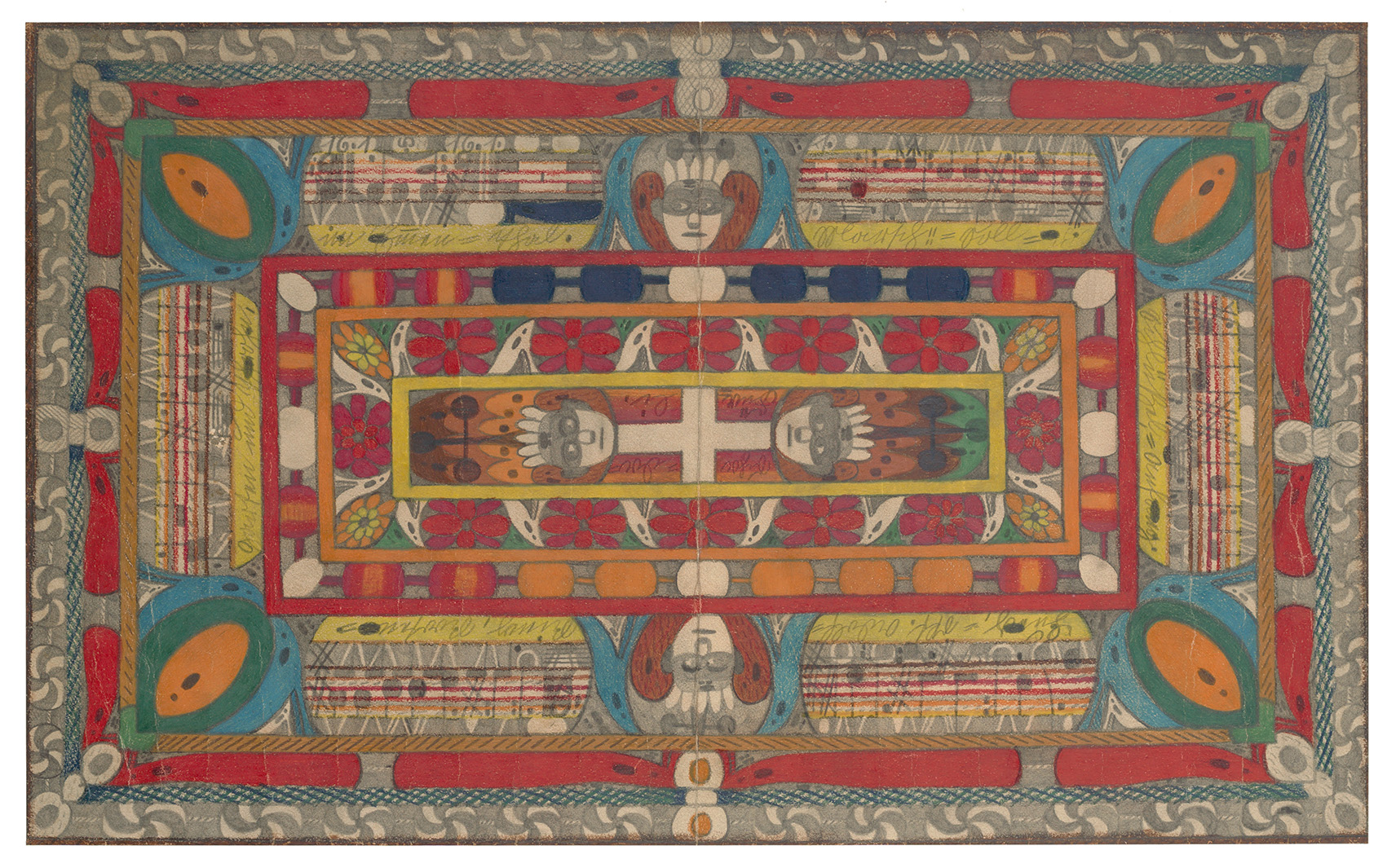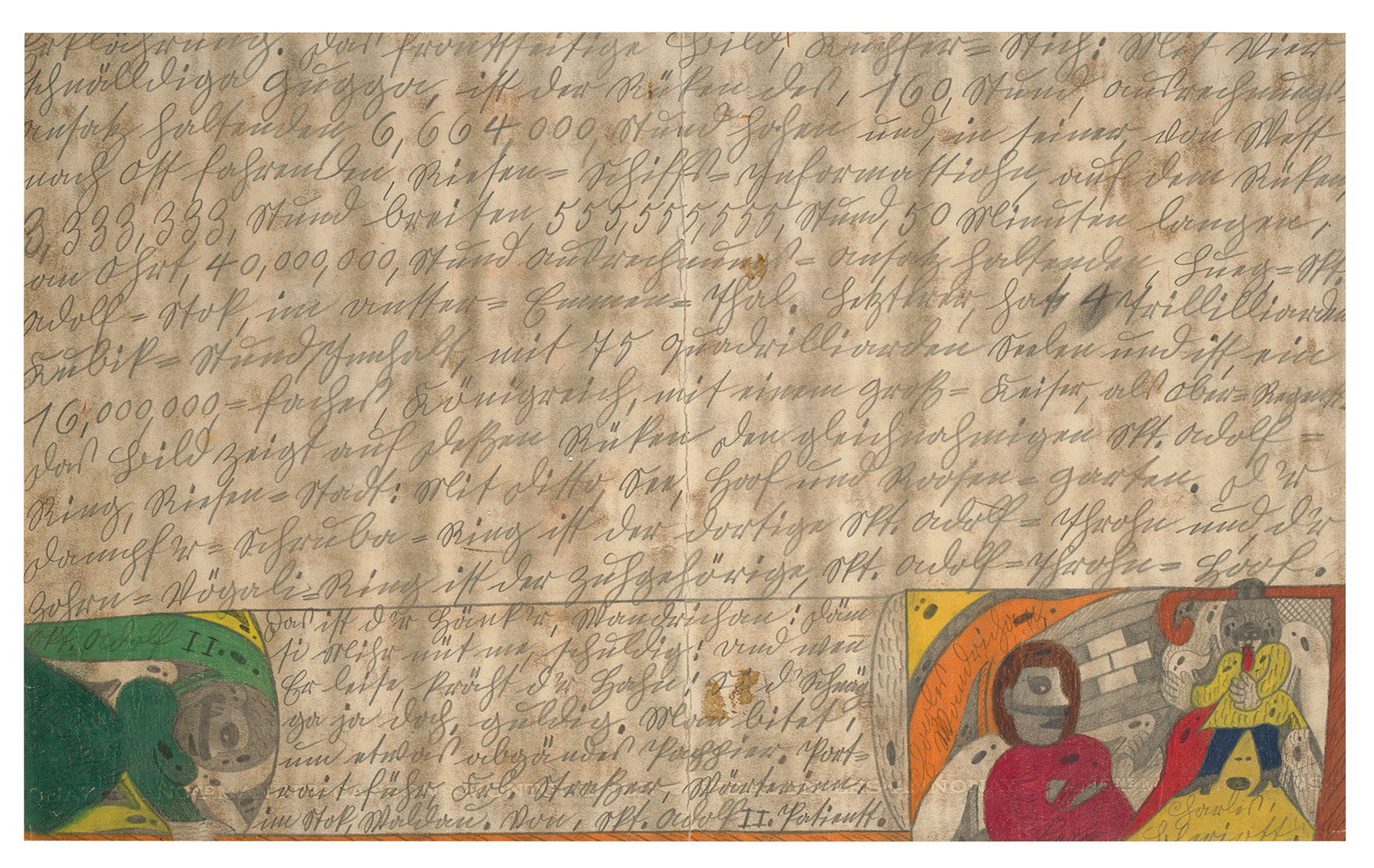Wölfli, Adolf
Switzerland, 1864 – 1930
The list of artists fascinated by Wolfli is long: Jean Dubuffet, André Breton, Annette Messager, Arnulf Rainer and others. As Breton stated, Wolfli was “one of three or four artists whose work was vital to the twentieth century”.
Born in Bowil, Switzerland, in 1864, Wolfli had a difficult childhood. His father, a stonemason who routinely drank his pay, left his family in 1872. Thrown into poverty, Wolfli and his mother were separated and sent to work on two different farms. She died shortly thereafter, as Wolfli would not learn until three months later. Henceforth Wolfli was shuffled from foster home to foster home and often treated harshly. Somehow he managed to stay in school. Disappointing love affairs affected him greatly and would have a strong impact on his life. In 1890 Wolfli was sentenced to prison for two attempted sexual molestations. Five years later, a third attempted rape resulted in his being confined to the Waldau Psychiatric Clinic near Berne, where he died in 1930 from stomach cancer.
In 1899 Wolfli threw himself into creative work. He constructed a universe both personal and complex, narrating the epic of St. Adolf II in order to reinvent his own past and to project a utopian future in which St. Adolf II has colonized the universe, all the way to outer space. This outsized empire required Wolfli to expand the numerical system by several units, the largest of which he called “rage”. Drawings, writings, collages and musical annotation combined in a majestic abundance of 25,000 pages that celebrated this celestial event. The psychiatrist Walter Morgenthaler took a particular interest in Wolfli’s art and published A Psychiatric Patient as Artist in 1921. Many artists and collectors were interested in Wolfli during his lifetime. He agreed to sell them his “Brodkunst” pieces, which were created on command. This monumental work, rediscovered by Jean Dubuffet in 1945, enjoys international recognition, well beyond the boundaries of art brut. Wolfli undoubtedly fascinates us by his rare capacity to “challenge our way of thinking and [change] fundamentally our vision of the world” (D. Baumann).


